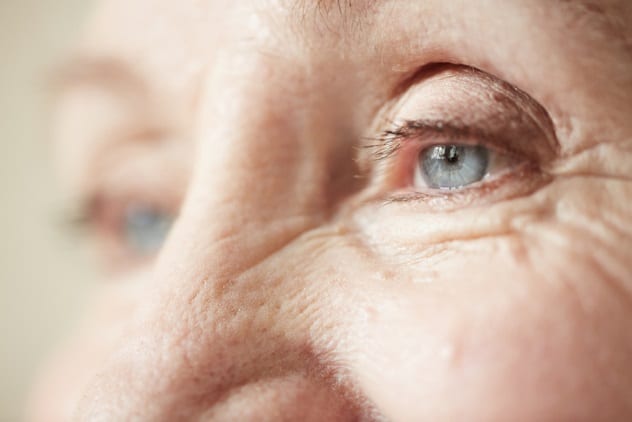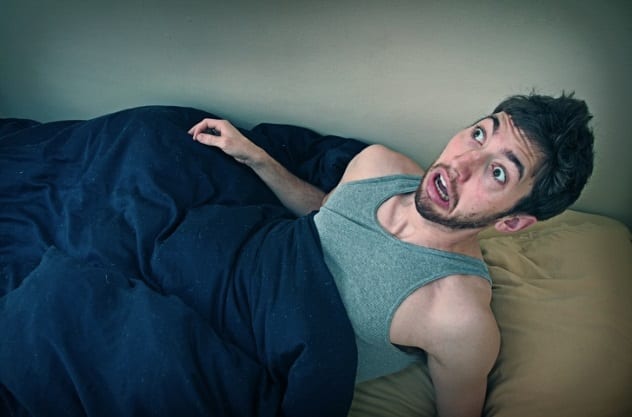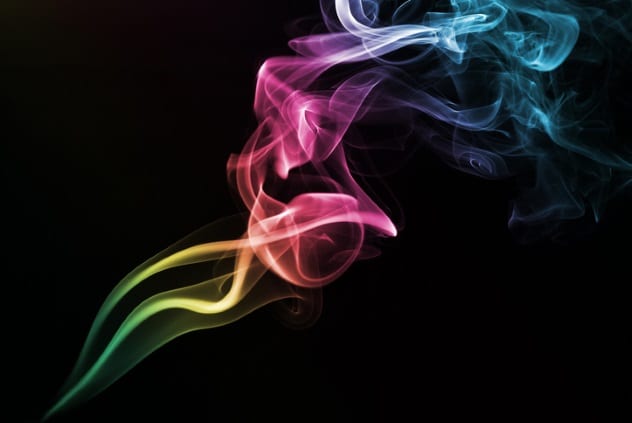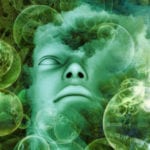 Animals
Animals  Animals
Animals  Gaming
Gaming 10 Game Characters Everyone Hated Playing
 Books
Books 10 Famous Writers Who Were Hypocritical
 Humans
Humans 10 of the World’s Toughest Puzzles Solved in Record Time
 Mysteries
Mysteries 10 Scientific Mysteries We Don’t Fully Understand
 Weird Stuff
Weird Stuff 10 Celebrities Who Have Admitted to Alien Encounters
 Our World
Our World 10 Surprising Secrets of Notre Dame Cathedral
 Miscellaneous
Miscellaneous 10 Intriguing Origins of Popular Carnival Rides
 Weird Stuff
Weird Stuff Ten Unexpected Discoveries Involving Vomit
 Movies and TV
Movies and TV 10 Actors Who Almost Didn’t Take Career-Defining Roles
 Animals
Animals 10 Amazing Animal Tales from the Ancient World
 Gaming
Gaming 10 Game Characters Everyone Hated Playing
 Books
Books 10 Famous Writers Who Were Hypocritical
Who's Behind Listverse?

Jamie Frater
Head Editor
Jamie founded Listverse due to an insatiable desire to share fascinating, obscure, and bizarre facts. He has been a guest speaker on numerous national radio and television stations and is a five time published author.
More About Us Humans
Humans 10 of the World’s Toughest Puzzles Solved in Record Time
 Mysteries
Mysteries 10 Scientific Mysteries We Don’t Fully Understand
 Weird Stuff
Weird Stuff 10 Celebrities Who Have Admitted to Alien Encounters
 Our World
Our World 10 Surprising Secrets of Notre Dame Cathedral
 Miscellaneous
Miscellaneous 10 Intriguing Origins of Popular Carnival Rides
 Weird Stuff
Weird Stuff Ten Unexpected Discoveries Involving Vomit
 Movies and TV
Movies and TV 10 Actors Who Almost Didn’t Take Career-Defining Roles
Top 10 Unbelievable Types Of Illusions And Hallucinations
When you think of the words “illusion” and “hallucination,” you may think of a crazy person seeing something that isn’t there. But there are many more types that are not discussed as frequently. You don’t need to be crazy to experience illusions and hallucinations, and many of them are not things that are seen.
Both illusions and hallucinations are types of distortions of reality, but an illusion is a distortion of something that really exists, while a hallucination is a distortion of something that isn’t real. Let’s explore the unbelievable world of illusions and hallucinations in some of their many forms.
10 Environmental Tilt

For people who experience this illusion, their world is turned upside down. Or, at least, their visual perception of the world is greatly tilted, such that the direction of “up” has moved somewhere else. This environmental tilt usually is perceived as a 90-degree or a 180-degree tilt, meaning that up could become right, left, or down. There are other, even rarer, cases in which up becomes forward or the tilt is at a more unusual rotation, such as 30 or 150 degrees.
Environmental tilt typically appears rather suddenly, and the illusion can last anywhere from a few seconds to around an hour. During these episodes, people report feeling dizzy, which isn’t all that surprising considering the disagreement between what they are seeing and their sense of balance.
One woman reported having very sudden tilts in her vision lasting around a second each time. One of her sudden tilts caused her to lose control of her car temporarily. Her tilts varied in degrees, including 45, 90, and 180-degree tilts. According to her case study, the rotations were in a clockwise direction when they happened slowly enough for her to see.
Many different problems can lead to the experience of environmental tilt, including strokes, migraines, and traumatic brain injuries. Sometimes, this illusion is triggered by patients moving their heads, as a sort of super-vertigo. Many patients found that the best treatment was to simply close their eyes until their normal vision was reset.[1]
9 Charles Bonnet Syndrome

In 2016, an 81-year-old woman developed some unusual problems with her vision. Specifically, she frequently hallucinated visits by pigeons in the early evening hours. She did not have any pathological mental problems—she was entirely sane—but she did have age-related vision loss. Her hallucinations were initially rare but later increased to an occurrence nearly every day. Doctors diagnosed her with Charles Bonnet syndrome.
In vision loss, the eye receives less input from the outside world, and it sends less information to the brain as a result. But brain cells are hungry for action. Neurons in the visual centers in the brain try to do their jobs anyway by changing the way that they respond to the diminished incoming signals. The cells can become more sensitive to incoming signals or generate their own. These changes can lead to Charles Bonnet Syndrome, in which a person hallucinates images in their blind spots.
In other words, because your brain cells in your visual centers don’t know what is in your blind spots, they make things up. This increase in visual center brain activity despite a decrease in visual input from the eyes is called the “deafferentation theory.” Evidence for this theory comes from brain scans that show increased brain activity in the visual centers of people with Charles Bonnet syndrome.
The hallucinations associated with Charles Bonnet syndrome usually last only minutes, but they can last for hours. The images often have moving parts, are in full color, and are often of people or geometric patterns. These images are almost always silent, and while patients have reported feeling confused by the hallucinations, they eventually become comfortable with them, realizing that they are not real.[2]
8 Chromatopsia

Colors are made in your brain. All that really exists outside your head are different wavelengths of light, bouncing off objects without a care as to what they might look like. It is entirely up to you to turn that light into colors. One common disorder of color is color blindness, in which certain wavelengths of light cannot be told apart. However, there are more mysterious disorders of color too, such as chromatopsia, the disorder that puts color where it doesn’t belong.
The word “chromatopsia” can apply to several specific distortions, including both illusions and hallucinations. On the illusion side of the spectrum is the type of chromatopsia often affiliated with migraine headaches, in which a person sees more color than what is truly present. It’s as if someone has turned up the color setting on your computer monitor, except in real life.
But on the hallucination side of chromatopsia, people experience seeing colors where they do not belong. In other words, colorless objects can suddenly take on colorful appearances, or a person’s entire field of view can change in perceived hue. There are specific names for each color that might permeate your vision in an episode of hallucinatory chromatopsia. Blue vision is called cyanopsia, yellow vision is called xanthopsia, and red vision is called erythropsia. There are also terms for purple vision (ianothinopsia) and green vision (chloropsia), as well as a term for when all color vanishes from your vision, which is called achromatopsia.[3]
7 Macropsia And Micropsia

The ability to tell how large something is when looking at it isn’t as straightforward as it seems. Figuring out the size of something requires a complicated process that considers both information from your eyes as well as information already in your brain. These are bottom-up and top-down processes, respectively. These two processes work together, for example, to help you figure out how tall someone is based on what other objects are near the person. We take this complicated operation for granted until it stops working.
Two illusions of mistaking the size of objects are called macropsia and micropsia. Respectively, they are perceiving things as being too big or too small. Essentially, people get the feeling that things they are looking at are larger or smaller than they are supposed to be. Both of these conditions are affiliated with an overall syndrome called Alice in Wonderland Syndrome due to how, like in the book Alice in Wonderland, things appear to shift sizes. In Alice in Wonderland Syndrome, around 45 percent of people experience macropsia, and around 59 percent experience micropsia.
The good thing about these illusions is that they are usually temporary, lasting only minutes in some cases. Many cases of macropsia and micropsia occur in children who get headaches, especially migraines.[4]
One 12-year-old reported multiple episodes of micropsia each day, and doctors were able to scan his brain using fMRI during one of his episodes. The results showed that the part of the brain that is responsible for processing vision was less active than normal. While this didn’t explain what specifically caused the illusions, it did show that his brain was behaving unusually.
6 Exploding Head Syndrome

Falling asleep is supposed to be a peaceful transition, but not so for people with exploding head syndrome. People with this condition occasionally experience disruptions while falling asleep or waking up in the form of hallucinations. Specifically, they hear a loud explosion noise in their head that shocks them awake. This explosion noise is usually accompanied by fear, but it is not painful.
While many people with this disorder have only a few episodes, there are reports of some sufferers experiencing multiple episodes in the course of a single night of sleep. In addition to the explosion sound, some people also experience flashes of light or slight body convulsions. The number of people with this disorder is not known, but it appears to be more common than originally thought when it was first discovered.
The noise itself sounds a bit different depending on the person. People have described it as lightning cracks, buzzing, fireworks, gunshots, beeps, and other sounds. While many people with this condition worry that the symptoms indicate some other, more serious problem, researchers of this disorder have described the condition as harmless. Because this syndrome is not yet well-understood, there are not a lot of known treatments, and researchers often recommend simple reassurance of the patient that the disorder will not harm them in order to reduce their anxiety about the attacks.[5]
5 Gustatory Hallucinations

If any of these illusions or hallucinations are going to leave you with a bad taste in your mouth, it will probably be gustatory hallucinations. Some people can imagine tastes when they want to, but it is a different situation when a person hallucinates a taste in their mouth that they cannot control. Hallucinated tastes are called gustatory hallucinations.
Unfortunately, most cases of gustatory hallucinations are of unpleasant tastes, including descriptions of rotten apples, stale cigarettes, rusty iron, or tastes simply described as bitter or unpleasant. Reports of pleasant tastes are quite rare, but accounts of generally sweet tastes or of specific foods, such as grilled peanuts or garlic, do exist. Some of the more unusual hallucinated tastes reported include sperm, charcoal, and chloroform.
A person can have a hallucination pertaining to any of their senses, including the main five senses of seeing, hearing, smelling, touching, and taste. Of these, hallucinations of taste seem to be the rarest in psychiatric disorders. Schizophrenia is often coupled with hallucinations, and for schizophrenics, gustatory hallucinations take a distant last place in terms of the five main senses. It is not known why these hallucinations are rarer than other sensory hallucinations, but researchers have found that the different types of sensory hallucinations are correlated. In other words, if you have one type of hallucination, you are more likely to have another type as well.[6]
4 Olfactisms And Odor-Color Synesthesia

There are groups of people who experience strange mixed perceptions of the world thanks to a condition called synesthesia. This condition describes a person who experiences perceptions that are involuntarily linked together, such as words and tastes or letters and colors.
One of the more rare experiences of synesthesia is sometimes called an olfactism, wherein a hallucinated smell is triggered by some other sensation that a person receives. For example, imagine that each time you hear the name “Andrew,” you smell rotten eggs. There are multiple types of olfactisms. They can be triggered by seeing certain lights, touching different textures, and even fluctuations in temperature.
However, the hallucination often works in the opposite direction, with the smell triggering the hallucination rather than being the subject of it. One type of synesthesia is where smells cause the seeing of colors. This is called odor-color synesthesia. The smells and colors are often closely attached to one another, meaning that the person will see a specific color when they smell a specific scent, but these associations sometimes change over time. Interestingly, people with this condition are superior both at recognizing colors and distinguishing smells compared to the average person.
In odor-color synesthesia, there may be specific smells that cause the person to experience intense colors. Some of the odors reported to trigger strong colors include animals, food, and household chemicals. The associations between the smells and the colors perceived do not necessarily align as expected. For example, smelling a banana could lead to a vivid perception of pink rather than yellow.[7]
3 Hallucinatory Halitosis

Halitosis means “bad breath,” and it is something that people are often self-conscious about, prompting them to freshen their breath with mints or gum. But sometimes, a person may perceive that they have bad breath when, in fact, the smell is all in their head. There are people who so strongly believe that their breath is bad that it disrupts the normal function of their lives. This condition is called hallucinatory halitosis or sometimes delusional halitosis. These names for the disorder appear interchangeable, but there is a small difference.
In hallucinatory halitosis, it is required that the sufferer actually experiences the bad smell that does not exist, while in delusional halitosis, the sufferer does not need to report having smelled this bad smell. It is sometimes unclear which term better applies because the sufferer is the only one who is able to report the possible hallucination.
Many people with this condition seek out medical treatment to improve the smell of their breath. In fact, some people with this disorder become so obsessed with finding a cure for their nonexistent bad breath that they search incessantly for medical specialists to fix them. Dentists or other doctors cannot help, of course, because there is no smell for them to fix. Patients with hallucinatory halitosis who are told by a dentist that their breath is fine often express that they would rather visit a “better dentist” than visit a psychiatrist to treat the delusion.[8]
2 Ictal And Postictal Religious Experiences

While it may not be surprising that some hallucinations have a religious feel to them, what may be surprising is that there are people who experience religious hallucinations due to epileptic seizures. In other words, they have strange feelings of religiosity, mysticism, or spirituality while they are experiencing a seizure or afterward. This disorder is usually affiliated with partial seizures of the temporal lobe of the brain.
What this experience feels like differs depending on the person, but it is often described as a feeling of connectedness to the universe. These seizures are closely related to the kind that cause feelings of joy or pleasure. The mystical experiences themselves may involve sensory hallucinations, such as hearing voices believed to be divine, seeing religious figures, or feeling a presence.
When the spiritual feelings occur during the epileptic episode itself, it is called an ictal religious experience. These ictal experiences typically last for a few seconds or minutes. In contrast are postictal religious experiences, which occur following an epileptic episode and can last much longer, such as hours or days.[9] These postictal religious experiences have been responsible for converting people to religions suddenly, due to the intensity of the experience.
In 1955, one man, after having an unusually depressing week, had a seizure that filled him with feelings of bliss and religious certainty. Later in life, he had another series of seizures which caused him to lose his new faith, but he did not lose his optimistic outlook on life. This set of two conversions in one person shows that hallucinations can be powerful enough to convince us of anything.
1 Supernumerary Phantom Body Parts

Have you ever thought about fictional characters with strange bodies and how it must feel to have wings, or a tail, or extra arms? Well, for some folk, they don’t need to wonder about that last one. Supernumerary phantom body parts are the result of an unusual disorder wherein a person has a hallucination of the awareness of possessing additional body parts that do not actually exist. Commonly, these body parts are hands or feet, but they can be other parts too, including eyes or entire heads.[10]
How is this possible? Your brain is responsible for interpreting sensory information that it receives from your body, such as when something touches you. It is also responsible for sending out information, such as telling your hand to move. What the brain must do with this incoming and outgoing information is assign it to a place on your body so that you can determine where you were touched or what body part is moving. But sometimes, often due to brain damage, the brain gets confused and creates categories of body parts that do not actually exist. Someone with supernumerary phantom body parts can actually feel those imaginary body parts being touched and moving, similar to the way that the average person feels their real limbs.
People with this disorder do not actually believe that they have extra body parts; they merely feel as if they have them and are not delusional—if a person truly believes they have extra body parts, then that is called delusional reduplication of body parts instead. Some people with this disorder report being able to feel objects with their phantom limbs in unusual hallucinations of touch, and some also hallucinate being able to see their phantom body parts.
Alexander R. Toftness runs a science and history channel at https://www.youtube.com/artexplains and can be found on Twitter @ARTexplains for more strange facts.
Read more about hallucinations and illusions on 10 Different Types Of Hallucinations That Humans Experience and 20 Amazing Optical Illusions.








